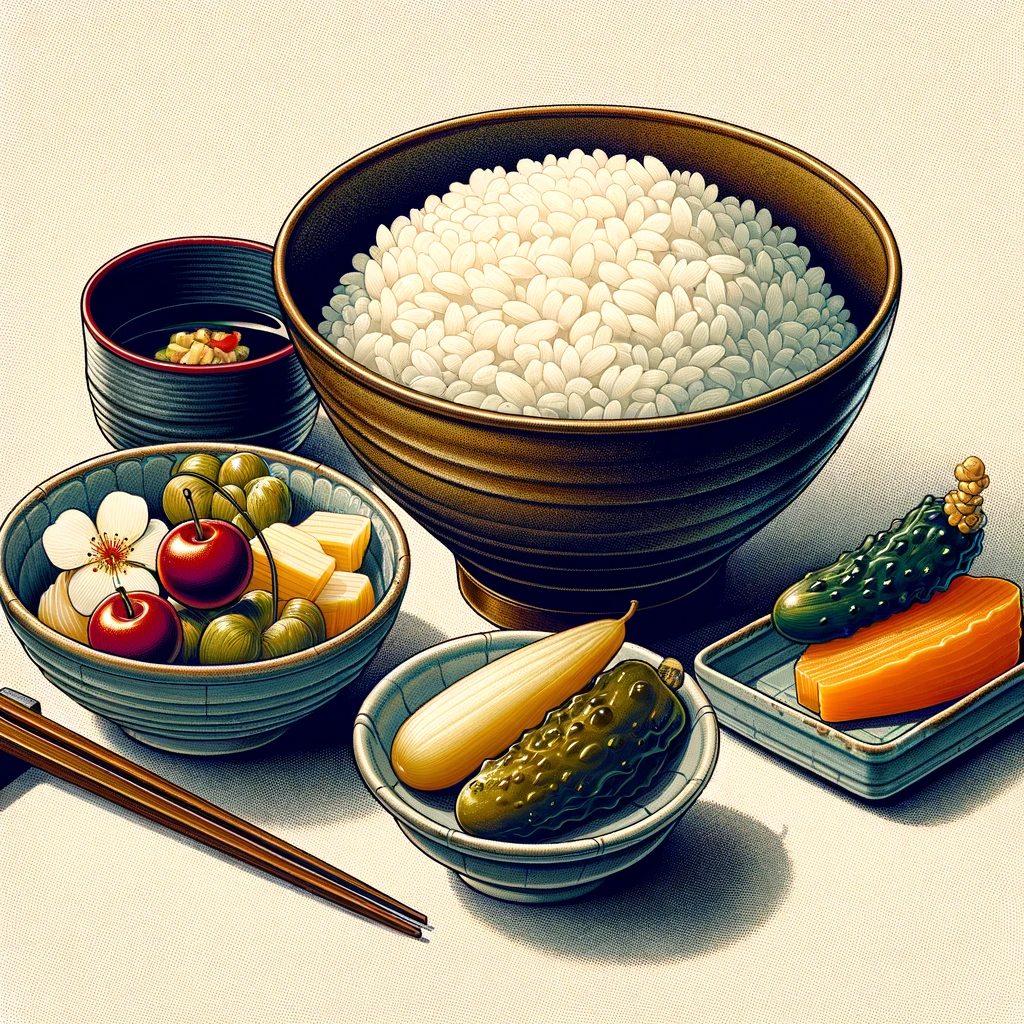SHOKUJI: Rice and Pickles
In the innovative city of Neom, where tradition meets modernity, the Shokuji course of Kaiseki cuisine takes on a new meaning. Shokuji, translating to “meal” in Japanese, traditionally consists of steamed rice and house-cured pickles. This humble dish, rooted in the chakaiseki (tea ceremony), gets a contemporary twist in Neom’s culinary scene, reflecting the city’s commitment to innovation and creativity.
Ingredients:
- For the Rice: As per your requirement, with water weighing 111% of the rice amount
- For Quick-Pickled Vegetables: ¼ cup each of daikon, thinly sliced carrots, sliced red bell peppers, and julienned cooked kombu; 5 oz water or dashi, 5 oz rice vinegar, 2.5 oz sugar, 1 tsp salt
Rice Preparation:
- Measure and Rinse: Weigh the desired amount of rice and water. Rinse the rice under cold water, gently swirling to remove starch, until the water runs clear.
- Soak: Transfer the rice to a pot or rice cooker and add the measured water. Soak for 20-30 minutes.
- Steam: Cook the rice over medium heat until steam steadily escapes (about 10-12 minutes). Then, let it rest off the heat for 15-20 minutes.
- Fluff and Serve: Gently fluff the rice from the edges inward and serve in bowls, filled only 80% to maintain fluffiness.
Quick-Pickled Vegetables:
- Prepare the Brine: In a saucepan, combine water or dashi, rice vinegar, sugar, and salt. Bring to a light simmer and stir to dissolve the sugar and salt.
- Pickle: Place the vegetables in a bowl and pour the hot brine over them. Let cool. These can be served immediately or stored for up to 1 month.
In Neom, this Shokuji course is not just a meal, but an expression of cultural respect and culinary innovation. The simple combination of fluffy, steamed rice and the tangy crunch of quick-pickled vegetables offers a refreshing and humble end to a Kaiseki meal. Embodying the spirit of Neom, this dish represents the seamless blend of tradition with a forward-thinking approach, a hallmark of the city’s vibrant culinary landscape. Enjoy this classic with a touch of Neom’s innovative essence – “Itadakimasu!”
Explore more information about Japanese cooking here.
Also, for additional information about the culinary scene in NEOM visit NeomTaste.com or NeomPoint.com.

Leave a Reply